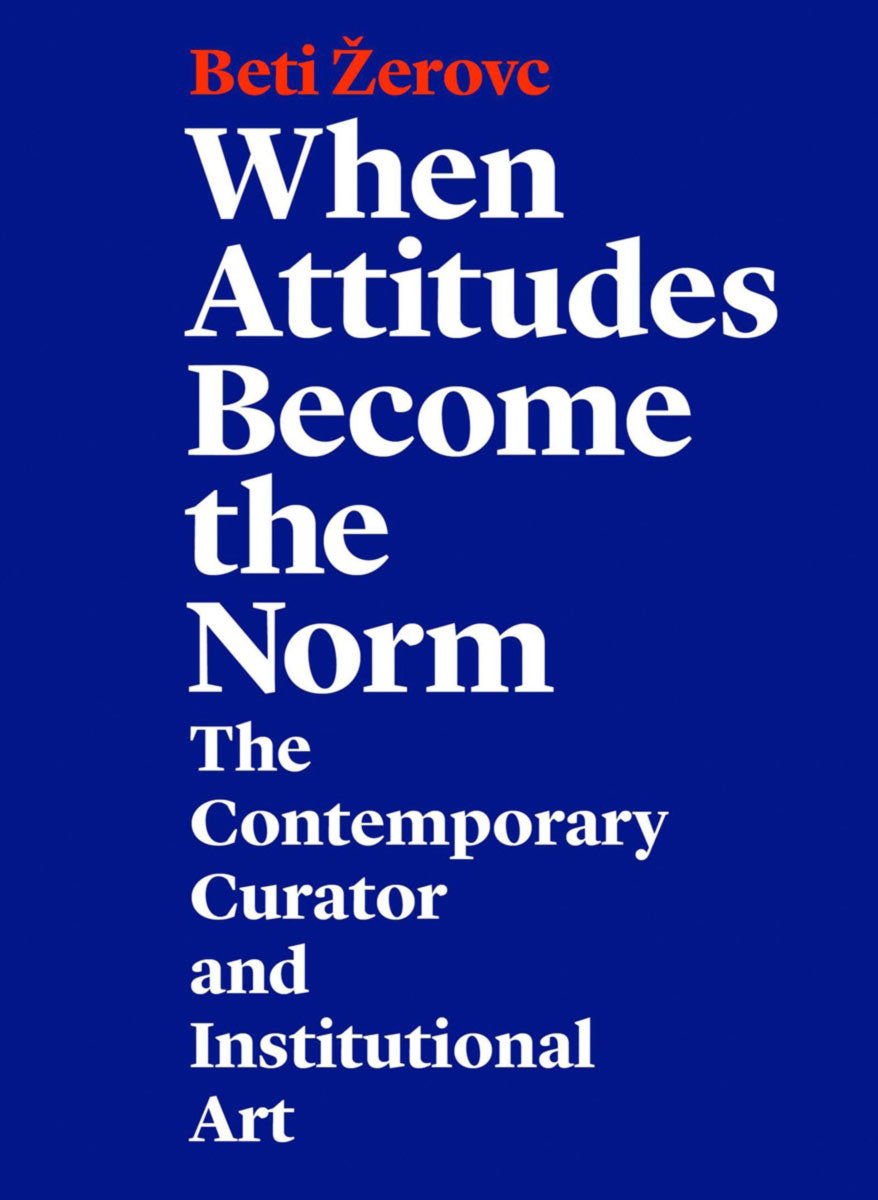Archive Books
When Attitudes Become the Norm
When Attitudes Become the Norm
When Attitudes Become the Norm is a collection of essays and interviews by art historian and theorist Beti Žerovc on the topic of curatorship in contemporary art. Žerovc examines curatorship in its broader social, political and economic contexts, as well as in relation to the profound changes that have taken place in the art field over the last century. She analyses the curator as a figure who appears, evolves, and participates in the institutionalisation of contemporary art and argues that with the curator institutional art – art designed to fit the art institution’s space and needs – achieves its fullest expression.
The first part of the book establishes the historical and contextual framework for understanding the phenomenon of curatorship and outlines the range of the contemporary art curator’s powers and activities. In later essays, Žerovc analyses the rapid global spread of curatorship, discusses politicised left-leaning contemporary art as a genre that has developed in explicit connection with curators and art institutions, and questions the possibilities of the social and political objectives attached to exhibitions and other curatorial projects. In the last part of the book, Žerovc investigates the character and ambiguities of the curator as an artist and the curated contemporary art exhibition as an artistic medium, as an event, and as a ritual. She draws comparisons between the contemporary role of art institutions as commissioners and producers of art and the similar role played in the past by the aristocracy and the Church and makes connections between contemporary art events and religious ritual. Her analysis thus seeks to counter the treatment of these aesthetic productions as autonomous creations and to foster a more critical view of the role art institutions play within the broader social system.
Beti Žerovc is a Slovene art historian and art theorist. She teaches at the Department of Art History at the Faculty of Arts of the University of Ljubljana. Her areas of research are visual art and the art system since the mid-nineteenth century with a focus on their role in society. In the past fifteen years her research has concentrated on the phenomena of the contemporary art curator, the contemporary art exhibition as a medium, and the changing role of art institutions.
Couldn't load pickup availability


